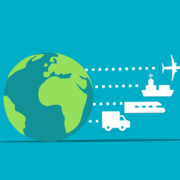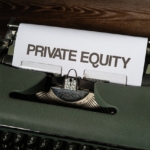EY confident supply chain sustainability will change world
In mid-March, TBR met with EY leaders to learn about their latest efforts around supply chain and sustainability, extending our previous discussions with the firm covering these areas separately. TBR heard from Glenn A. Steinberg, EY’s Global Supply Chain and Operations leader; Velislava Ivanova, EY’s chief sustainability officer and Climate Change and Sustainability Services leader for the Americas; Rae-Anne Alves, EY’s ESG (Environmental, Social and Governance) and Sustainability Supply Chain leader for the Americas; Martin Neuhold, EY’s Europe West Supply Chain & Operations leader; Lauren Rogge, EY’s senior manager of Climate Change and Sustainability Services; and Akshay Honnatti, EY’s U.S. Sustainability Tax leader.
Standing out by understanding the problem, defining it and tackling it head-on
During the hourlong discussion, three key observations emerged. First, the EY leaders’ emphasis on the global nature of supply chain and sustainability echoed the firm’s ongoing efforts to operate more seamlessly across international — and member firm — borders. Steinberg acknowledged EY’s Europe-based supply chain practice has been a leader globally, with more depth and experience than the Americas and APAC practices, but reiterated the globally integrated nature of EY’s approach to supply chain sustainability. Second, EY presented client stories centered primarily on traditional consulting engagements and outcomes, including strategies, road maps and change management. EY’s decision to play to its core strengths and avoid promoting technology for technology’s sake reinforces the firm’s overall strategy and its approach to clients’ business problems. And third, EY presented five themes, detailed below, which appeared to TBR to be split between regulator-driven and client-driven approaches. Given the nascency of supply chain sustainability as an EY practice and a priority for EY clients, TBR believes this five-themed framework can serve as a useful guide for clients, investors, regulators and any interested parties across both supply chain and sustainability. In short, expanding globally, playing to core consulting strengths and crafting a framework that resonates should be a solid formula for sustained growth.
To set the stage for the discussion, the EY team said their firm’s Supply Chain & Operations Consulting Practice is set to reach 30% year-to-year growth in 2021, and upward of 40% growth in the Americas. Among the drivers for that growth, EY mentioned ongoing shipping disruptions, excessive supply concentration risks and expiring legacy on-premises IT systems. As enterprises invest in tackling multiple related supply chain and operations challenges and increasingly tie every aspect of their business to sustainability goals, EY has seen new roles emerge, including a chief sustainability officer. In all, EY painted a picture of continued uncertainty around financial and regulatory pressures compounded by macro trends outside of most enterprises’ control. In other words, a perfect environment for consulting.
5 key trends define the supply chain challenges now, next and beyond
To make sense of the chaos, EY explained its framework for chief supply chain officers, including a version of EY’s customary “Now, Next, Beyond” approach, and then five key trends explaining what actions and investments their clients have undertaken (at EY’s recommendation). To set the framework, EY defined resiliency as the combination of visibility and agility, with clients encouraged to fully understand their supply networks, including their operating models and workforces.
Similarly, EY defined sustainability as the commonly used combination of environmental, social and governance, with the emphasis here more on clients taking an outside-in view of themselves. Rounding out the framework, EY described the “Now” as “cost-optimized, manual, rigid and linear,” the ”Next” as “agile networked ecosystems,” and the “Beyond” as “autonomous.” Within that framework, EY then introduced five key objectives:
- Ensure sustainable and diverse sourcing
- Enable traceability, visibility and disclosure
- Decarbonize the value chain
- Introduce circularity into your business model
- Assess impact of new taxes and incentives for a sustainable supply chain
In TBR’s view, Nos. 2 and 5 reflect the changing regulatory pressures around sustainability and increasing calls for structured, common reporting requirements (see this TBR assessment of an EY webcast on this exact issue). Nos. 1, 3 and 4 focus on enterprises themselves and the changes needed to meet sustainability goals and ensure enduring results.
A coherent and complete sustainable supply chain and operations framework
To illustrate the importance EY places on the framework, the EY team walked TBR through several use cases, all tied explicitly to one or more of the five objectives. Across the use cases, three points stood out to TBR. First, one of EY’s most compelling use cases has been EY itself. The EY team shared an example of a global retailer seeking EY’s advice on diversity, equity and inclusion (DE&I) improvements based on what the client understood about EY’s own internal DE&I success. Second, EY’s technology integrations appeared to be a seamless component of solving a client’s problem, rather than an attempt to shoehorn technology into an engagement to sell a solution. And third, EY’s ability to bring regulatory expertise, particularly around tax issues, consistently elevated the firm’s value with clients.
EY has not been alone in trumpeting its own internal success, layering technology into consulting engagements and bringing governance, risk and compliance expertise to the table. What may separate EY, in TBR’s view, is the coherence and completeness of EY’s sustainable supply chain and operations framework. Repeatedly, the EY team came back to the trends affecting the firm’s clients and recognizing the opportunities to make fundamental changes, not simply short-term operational cost-takeout measures. One example of this long-term thinking came from Steinberg, when he noted that the “circular economy is one of the main levers to decarbonization.”
In EY’s own estimation, clients looking to “introduce circularity” into their business model will need to grapple with, among other challenges, “consumption of resources faster than regeneration cycles with an over-reliance on resources which don’t replenish themselves fast enough to sustain the ever-growing demand” and “regulatory requirements” which may create “extended producer responsibility, waste reduction regulations and the banning of certain products and materials.” Most enterprises have not planned for resources regeneration cycles and waste reduction regulations, but EY appears to understand most enterprises eventually will, so the smarter clients will start now, with EY’s guidance.
Comes down to measurement: Who decides, who measures, who cares
TBR believes sustainability and supply chain challenges require strategy consulting and change management-led approaches, not technology-driven solutions, which plays to EY’s strengths in the near term. As clients’ own sustainability competencies mature, EY should be well positioned to provide technology-enabled solutions to help clients sustain their decarbonization efforts. EY works with its Alliance Partners including Microsoft, SAP, Enablon, and P&G to develop and deploy new ESG solutions in the market focused on ESG reporting, carbon emissions, decarbonization, supply chain and product transparency. They have also formed a partnership with Nottingham Spirk, a product innovation company, around embedding ESG criteria into product design for its clients.
TBR’s favorable assessment of EY’s potential hinges in large part on EY’s track record for layering both trust and data into the firm’s consulting and technology solutions. The most critical element for sustainability will be measurement, starting with how the enterprises, regulators, employees and investors come to agreement on definitions for “sustainable” and “decarbonization.” If EY can lead that discussion and provide its clients with meaningful answers, the firm will stay ahead of the sustainability curve and continue growing its supply chain and operations practice.



